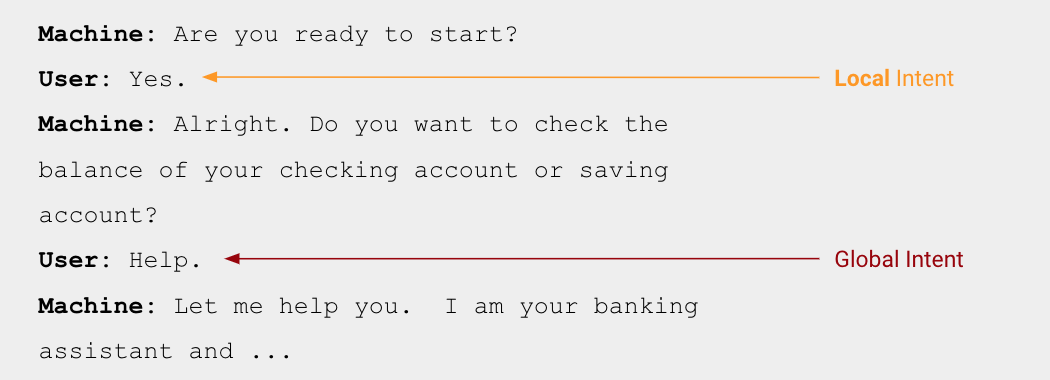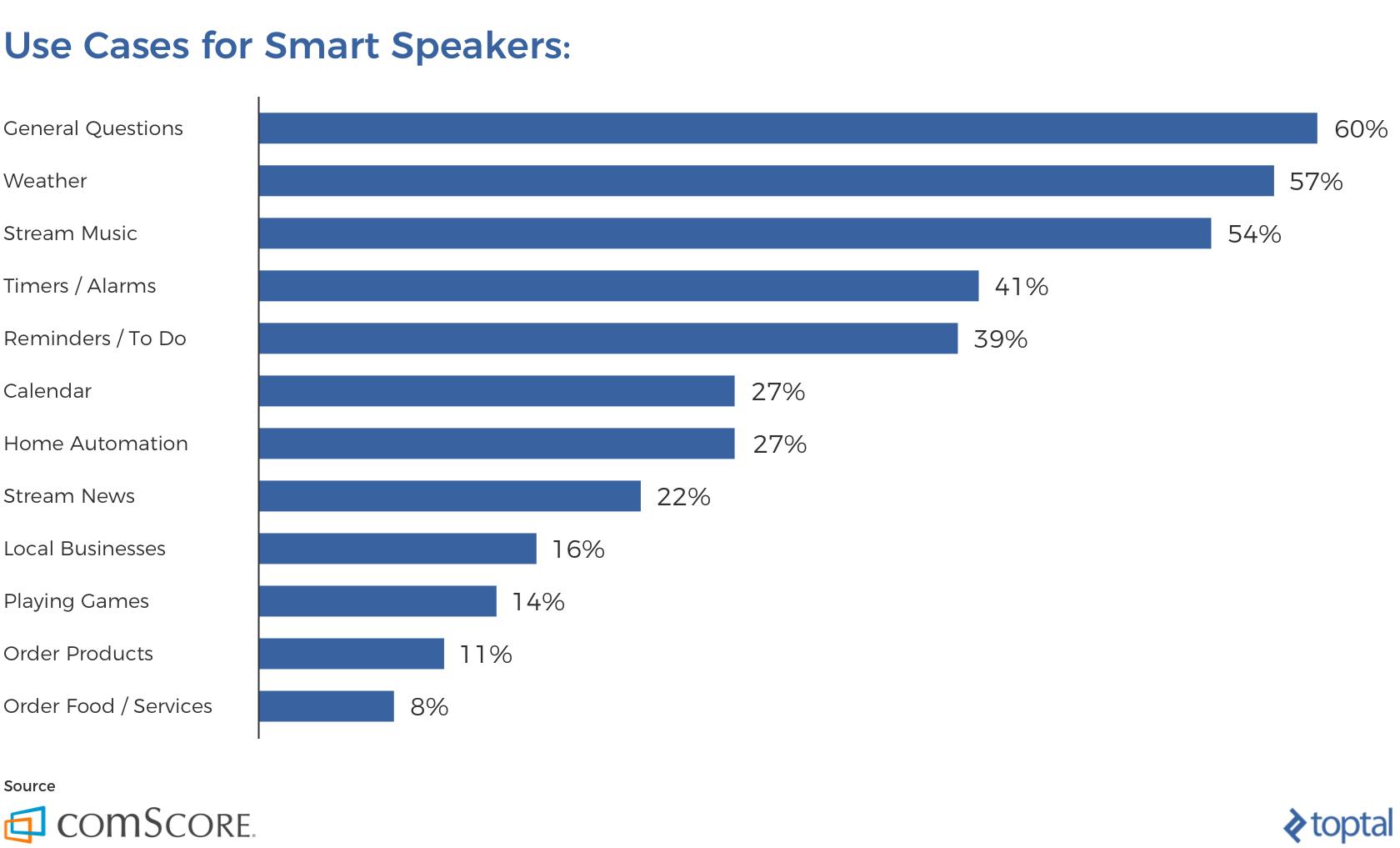Voice assistants like Siri, Alexa and Google have immense potential underlying their technologies. They can help differently abled users in their daily lives and it is going to have a huge, huge impact on their respectively different daily chores and usual lifestyle. While on the other hand.
Voice assistants are creating an entirely new and different line of technology and marketplaces and ecosystems around them. No doubt, in a few years we are going to live the future we always dreamt about.
VUI is the new hot space
Voice User Interfaces (VUI) - Voice User Interfaces (VUI) are the primary or supplementary visual, auditory, and tactile interfaces that enable voice interaction between people and devices.
VUI does bring across some challenges for the designers:
- Some users are not aware of what they can and cannot ask the voice assistant
- The response does not last for a long period of time. It's a matter of seconds, it resides only in the short term memory of the user and has no persistence.
About Prompts & Statements : The language of VUI

Upon hearing an invocation phrase like "Hey Siri" or "Hey Google" or "Hey Alexa" the device or VUI wakes up from sort of a sleep or hibernate mode and responds within fractions of a second; that too in a TTS output - Text To Speech.
In the case of developers, the VUI output doesn't differ a lot. They have to work around the variations of an output. While on the Voice User Interface designer's end, they have to clearly differentiate between a prompt and a statement.
Generally Prompts and Statements constitute the core building blocks of any human conversation. When it is your turn to speak, you will likely deliver a statement and followed by a prompt to let your interlocutor back in the conversation, if only to confirm he has heard you.
Prompts ask questions to the other party and seek an answer; they take many forms: from open-ended questions (“what do you think?”), closed-ended question (“are you ready?”), to intonation, body language or eye contact that invite the other person to jump into the conversation.
Statements deliver an opinion, comment or share information and do not solicit input; interrupting a statement would be considered rude in most social settings.VUI designers need to differentiate between prompts and statements because each requires a unique authoring strategy.
How accessible are home assistants?
The Voice User Interfaces (VUI) concept looks very thought through. Very exercised and catered towards making the world a better place, no kidding, those words carry a lot of weight. What are voice assistants doing ?
- Some people face issues using mobile devices and it is to their utmost comfort that they don’t have to play around with screens and lighting and blah blah. They tend not to experience any kind of frustration, discomfort, or severe headache or difficulty in playing around their commands by using their voice.
- Some people do have tremendous difficulty reading and making sense of the words displayed on their screens but they find it easy when they can hear the same information and make it people that find reading difficult can hear information instead of struggling with the text-heavy internet.
- People with limited or no vision may find it faster to use a voice interface than using a website with a magnifier or screen reader.
- Some people with cognitive issues or that are overwhelmed by computer interfaces may find a voice interface simpler to use than a large website.
Here are some usage statistics for smart speakers and why they contribute a great deal to the accessibility landscape:

Google Assistant is way more mature in its category - “Google Assistant opens many new avenues”
A person lost his ability to speak, but using Siri’s speak selection feature he could still read his regular emails or wise up on articles, but one thing he couldn't do again was to trigger Siri by his voice by using the command - “Hey, Siri” to do what the world was doing in the fraction of a second and with utter ease.
Later then was introduced the google assistant with its very market-ready name and a whole new way of interactive with voice assistants, using text and voice commands. Then came along Google Assistant with its uncreative name and a whole new option to use either voice or text commands. That made a lot of things easier for people. He could schedule appointments and have his calendar at his disposal.
Amazon Alexa has become a family member in my cases
People have been using Alexa for many family purposes. It is considered to be the most well-inducted home assistant with a comparatively affordable price tag and also make living comparatively easier. Not saying that they are perfect of their category but they are getting their due training with time and they are only supposed to get better from here onwards.
Speech-to-text and text-to-speech
Apps are helping people with speech impediments and the ones recovering from strokes and brain injuries of various kinds or the ones suffering various categories of speech incapabilities, the apps learn their respective pronunciation pattern over time and match it to their own vocabulary. It learns speakers’ pronunciation over time, normalizing abnormalities in exportable audio and text.
In the meanwhile, Google’s Deep Mind division is using AI to generate closed captions for deaf users. As per a 2016 joint study conducted by a team of experts at the University of Oxford, DeepMind’s algorithm watched more than 5,000 hours of television and analyzed 17,500 unique words. The resulting model significantly outperformed a professional lip-reader, successfully translating 46.8 percent of words without error in 200 randomly selected clips compared to the human professional’s 12.4 percent of words.
A closing note
The potential of voice assistants is impeccable and it may reach an extent where the differently abled will be able to meet their daily chores without the special hassle in executing them. I am definitely excited about what’s there to come and what’s already been achieved by far. Accessibility is becoming the supreme priority of technology and it will take time to achieve so.
Subscribe
Related Blogs
Exploring Drupal's Single Directory Components: A Game-Changer for Developers

Web development thrives on efficiency and organisation, and Drupal, our favourite CMS, is here to amp that up with its latest…
Exploring Drupal's Single Directory Components: A Game-Changer for Developers

Web development thrives on efficiency and organisation, and Drupal, our favourite CMS, is here to amp that up with its latest…
7 Quick Steps to Create API Documentation Using Postman

If you work with API, you are likely already familiar with Postman, the beloved REST Client trusted by countless developers…




